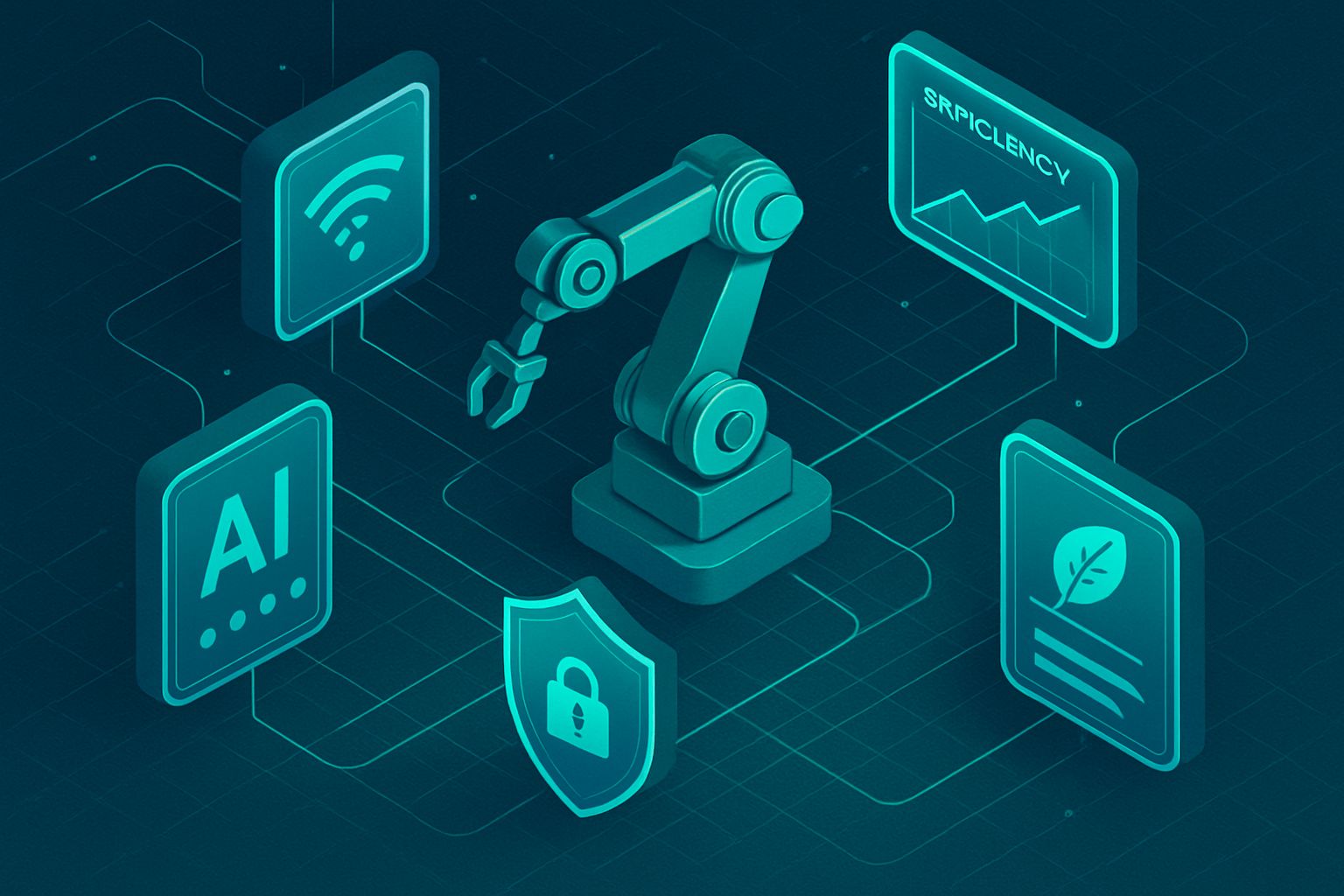
AI CERTS
21 hours ago
Industrial AI: IDC Report Finds Efficiency, Security, Energy Wins
However, many practitioners still sift through hype and conflicting market forecasts. This article distills the new data, explaining adoption patterns, outcome expectations, and lingering barriers. Additionally, it offers actionable guidance and certification resources for technical leaders seeking measurable impact. Readers will gain a balanced, fact-based view grounded in the IDC findings.
Global AIoT Adoption Trends
SAS and IDC report that 62% of surveyed organizations already run AIoT projects. Furthermore, 43% of those adopters describe deployments as widespread or fully integrated. In contrast, only 31% remain in planning mode. Heavy users were almost twice as likely to exceed value expectations according to IDC director Kathy Lange.

These numbers confirm that Industrial AI has crossed early experimentation. Moreover, Asia Pacific leads in moderate adoption while North America accelerates toward large-scale rollouts. Meanwhile, EMEA executives show optimism across every maturity phase.
Adoption momentum is unmistakable, yet unevenly distributed. Therefore, understanding concrete use cases becomes vital.
Key Use Case Insights
Predictive maintenance dominates current AIoT spending. Approximately 71% of respondents use sensors and analytics to prevent unplanned downtime. Additionally, IT automation attracted 53%, while supply logistics followed at 47%.
Industrial AI amplifies each application by combining edge inference with cloud training. Consequently, uptime increases, and processes improve Efficiency across entire plants. Energy management scenarios also appear, although the survey grouped them under broader operational savings.
- 71% adopt predictive maintenance solutions
- 53% automate IT operations with AIoT platforms
- 47% optimize supply and logistics workflows
Moreover, early adopters report stronger Security postures because anomaly detection flags malicious device behavior. Nevertheless, scale demands robust architecture spanning devices, gateways, and clouds.
These use cases illustrate quick wins and strategic levers. Subsequently, executives focus on tangible business outcomes.
Primary Business Outcome Drivers
Cost reduction remains the top boardroom priority. IDC notes that 54% anticipate major savings once projects mature. Furthermore, 63% expect productivity and competitiveness gains.
Industrial AI delivers these results by predicting failures and suggesting process adjustments in real time. Moreover, 52% forecast smarter, faster innovation cycles linked to data feedback loops. Energy efficiency improvements follow, lowering carbon footprints along with utility bills.
Heavy AIoT users reported benefits that significantly exceeded expectations almost twofold. Therefore, early skepticism is fading.
Outcome data validates strategic investment decisions. Industrial AI momentum sustains that optimism. Meanwhile, regional dynamics influence rollout speed.
Regional AIoT Adoption Patterns
Asia Pacific shows the highest concentration of moderate AIoT deployments. Consequently, many plants there treat edge analytics as default architecture.
North American manufacturers pursue aggressive scaling, driven by reshoring incentives and rising labor costs. In contrast, EMEA operators adopt balanced pilots while refining Security frameworks to satisfy stricter regulations.
Industrial AI use cases differ slightly across regions, yet predictive maintenance stays universal. Additionally, Energy prices motivate European plants to prioritize Efficiency analytics.
Regional nuances affect timing, not ambition. Therefore, leaders must tailor playbooks to local conditions.
Barriers And Practical Solutions
Despite optimism, skills shortages top the barrier list. Manufacturers struggle to recruit data scientists and control engineers with AIoT expertise. Consequently, many projects stall after proof-of-concept phases.
Legacy equipment integration poses another hurdle, especially where proprietary protocols block data access. Moreover, poor data quality undermines model accuracy and erodes confidence.
Security risks expand as device fleets grow, increasing attack surfaces and compliance burdens. Therefore, leaders invest in zero-trust architectures and continuous monitoring.
Industrial AI adoption also faces cultural resistance because engineers trust manual inspections. Nevertheless, structured change management and targeted training reduce pushback.
- Create cross-functional AIoT centers of excellence
- Modernize networks with secure edge gateways
- Invest in workforce upskilling programs
- Institutionalize Industrial AI governance frameworks
- Align metrics with financial outcomes
Professionals can enhance their expertise with the AI Robotics™ certification. Additionally, such credentials reassure hiring managers and investors.
Barriers are real but manageable with structured action. Subsequently, a concise checklist clarifies priorities.
Strategic Next Steps Checklist
Executives often request a simple roadmap following data reviews. Therefore, this checklist distills survey lessons into immediate actions.
- Benchmark current AIoT maturity against IDC metrics.
- Prioritize predictive maintenance for fast ROI.
- Develop secure edge-to-cloud architecture patterns.
- Launch workforce upskilling linked to certifications.
- Track Efficiency, Energy, and Security KPIs quarterly.
Moreover, leaders should engage ecosystem partners such as Siemens, Microsoft, and NVIDIA early. Industrial AI ecosystems thrive when hardware, software, and integrators collaborate.
Consequently, regular audits confirm progress and surface hidden dependencies.
This checklist converts research into operational discipline. Meanwhile, concluding insights underscore long-term outlooks.
Manufacturers worldwide have entered a decisive phase for value capture. The IDC study confirms that disciplined AIoT strategies already create measurable Efficiency, Energy savings, and stronger Security. Moreover, companies embracing Industrial AI consistently outpace peers on cost, uptime, and innovation speed. Nevertheless, skills, integration, and governance remain non-trivial hurdles. Leaders should follow the checklist, invest in talent, and adopt zero-trust architectures. Consequently, competitive gaps will widen for laggards. Explore the linked certification to strengthen your Industrial AI roadmap today.



